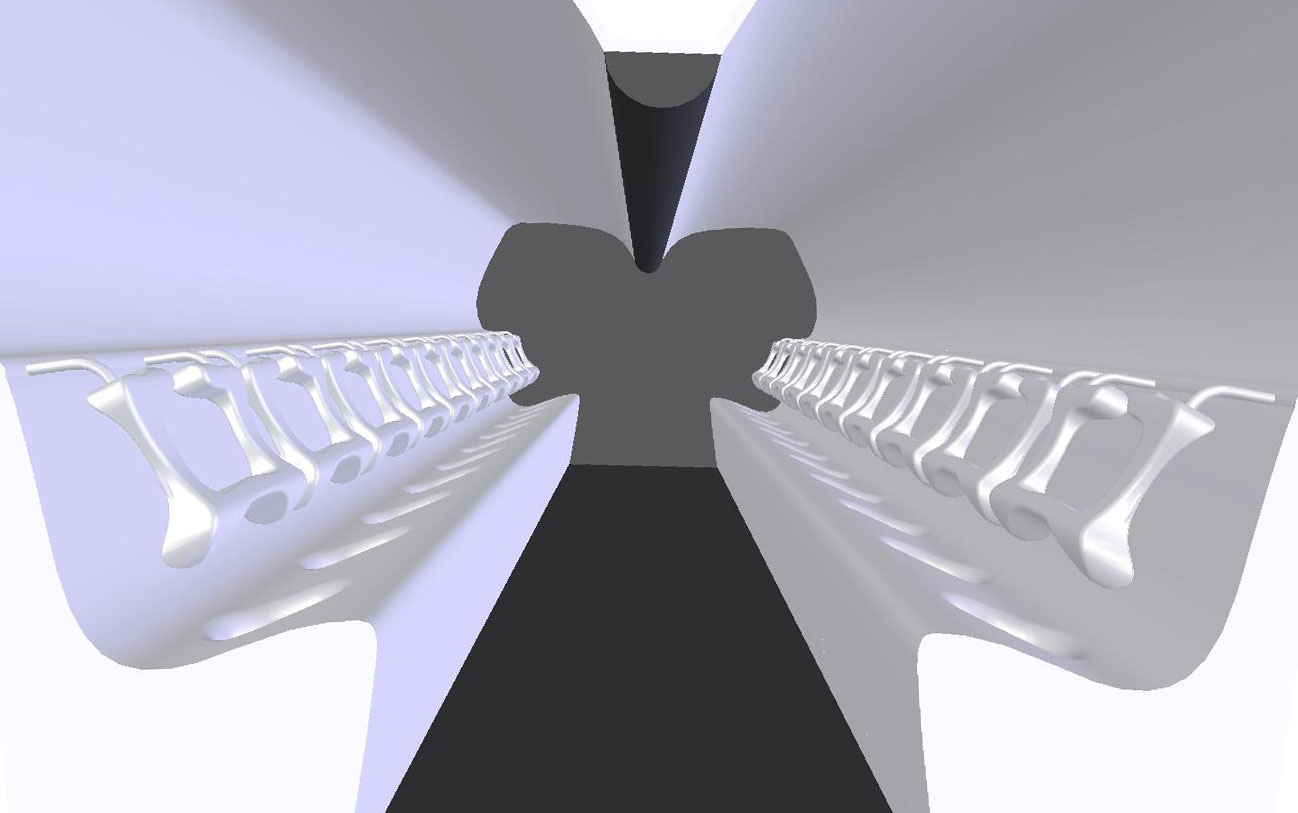Washbus:

A Triage+Treatment+Transport vehicle that integrates
decontamination (decon is treatment) with patient transportation.
The basic idea is a Treatment vehicle that can seat a large number
of ambulatory patients and decontaminate them while they are
safely seated during transport.
It functions like an inverse carwash
to save valuable time and lives, by putting transit time to practical
use, so that contaminated ambulatory patients can be immediately admitted
to hospital as soon as the vehicle arrives at the hospital.
Shoes, clothing, and other personal items are stored safely in the
luggage compartment below the bus for retrieval at the hospital.
One or two washbuses (one with a tarp hanging down the middle,
or separate washbuses for men and women) would work in parallel with
the fixed decon facilities at the hospital, resulting in increased total
throughput. A washbus might, for example, be stationed at an election,
a political convention, or a similar likely terror target to ensure
no delay (neither delay at the incident site nor delay at the hospital)
occurs due to the need to decon patients before they are admitted to
hospital.
Implementational details for the "inverse carwash":
Usually only the exteriour of a vehicle can withstand getting wet,
but a specially designed vehicle could feature inward-directed spray
that comes from the vehicle itself.
The major problem with wetting down the inside of a bus would be
the seats (upholstery) and the seat belts (if any) which are made of
fabric.
Instead:
- the seats would be replaced with sculpted fiberglass
(smooth round surfaces that are comfortable to sit on, but do not
harbor contamination or hold water);
- the seat belts would be replaced with plastic or stainless steel
restraint bars, similar to those found on amusement rides, or the like.
A properly sculpted vehicle restraint system that fits the contours of
the human body would require no padding or fabric that could harbor
contamination or could hold water.
Ambulatory victims would undress themselves, stow their shoes, clothing,
and personal effects in the luggage compartment below the bus, and
board the bus for a sit-down shower that would occur during transport.
Men and women would undress on opposite sides of the bus (the bus would
be equipped with under-bus storage compartments on both sides).
One gender would board, and be restrained, a tarp would drop down in
the middle of the bus to create a privacy barrier, and then the other
gender would board. For privacy, the windows could be frosted either
permanently or temporarily with foam spray on the outside that would last
until the bus was loaded and out of the way of onlookers and the media.
The showers would be timed to dispense a limited but sufficient amount of
decon solution at a rate that matches the length of the journey. If the
nearest hospital were some larger distance away, the showers would run
longer, but with a lesser flow-rate, alternating with dry-air-jet decon.
Human waste disposal
To avoid confusion and possible spread of contamination among a
potentially hysterical busload of panicky victims, consider, perhaps,
means for disposal of human waste being incorporated into the seating.
For example, an elongated slot running the length of the seats could
receive waste that would be fed to a collection tank in the bus, along
with shower runoff, vomitus, drainage, etc. (infrastructure that might
already need to exist for the showerbus).
Dry decon (airwash bus)
Even without the sit-down showers, simply having the victims disrobe and
"air out" for the entire duration of their trip to the hospital may
prove sufficient for removal of 90 percent of any possible contamination.
Additonally, air jets or "air curtains" may be used to keep clean air
running in from outside (and discharged by way of a HEPA filter),
so that one contaminated victim does not contaminate others who are
seated in close proximity.
Clean Air
A similar configuration could be used in air traponsort of victims.
However, due to weight constraints it may not be possible to carry large amounts of shower water
onboard the special aircraft. In this case a large portion of decon could be by way of the "air out"
method.
Quarantine+isolation
The bus may be divided into sections to separate quarantine and isolation,
to some degree. One or more empty rows of seats may separate victims
known to be contaminated to a greater degree than others (i.e. those with
liquid chemical agent visibly present separated from those with vapor-only
exposure). Additional dividers could be modular in design so that they
could be attached to any of a large number of snap-in locations depending
on specific circumstances.
Properly designed vehicle restraint bars would prevent victims
from wandering about the bus or attempting to flee.
Restraint bars would be remotely operated (like in an amusement ride),
so that everyone would be released automatically
as soon as the bus was safely inside
a properly secured casualty collection point.
Alternatively, victim release could be timed or sequenced,
e.g. ordered by gender, or by severity of exposure so that
triage could be enforced so that there is not one sudden inrush of
a full busload of patients running toward the hospital doors at the same time.
--S. Mann, DECONference 2002
